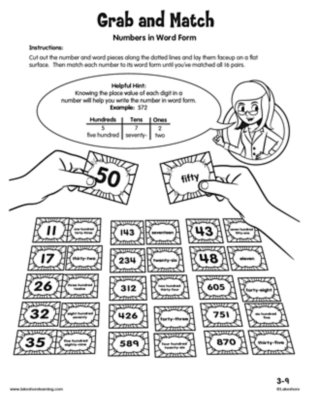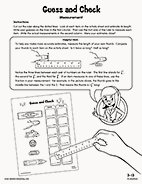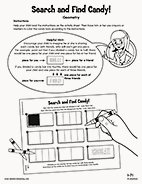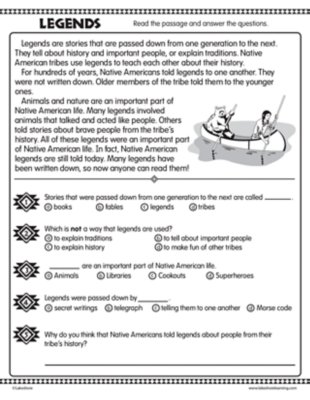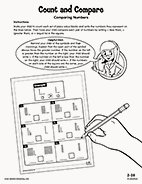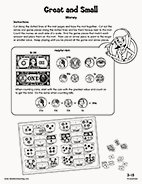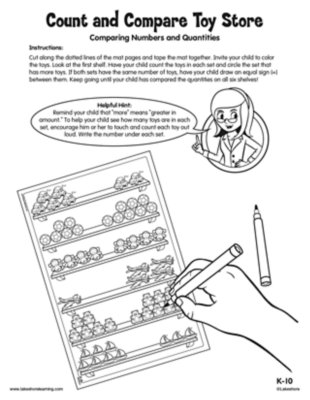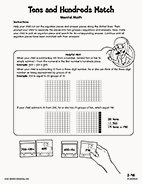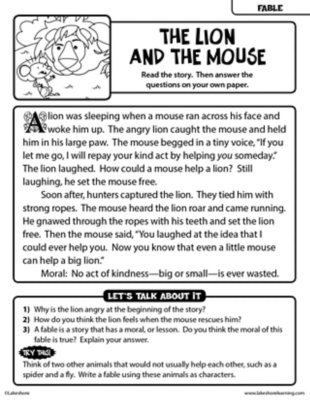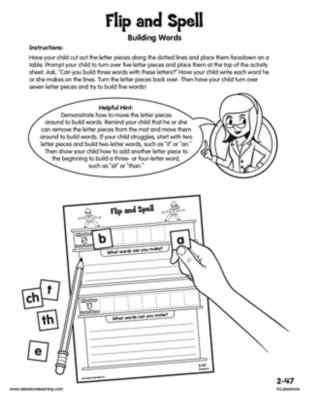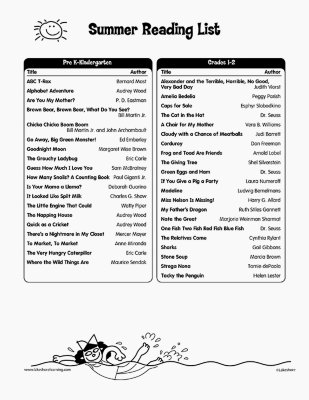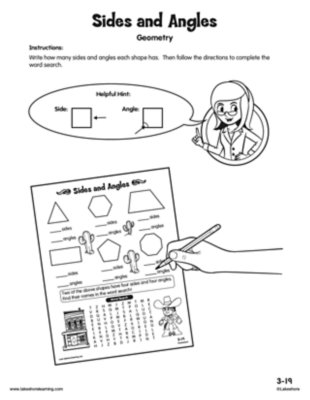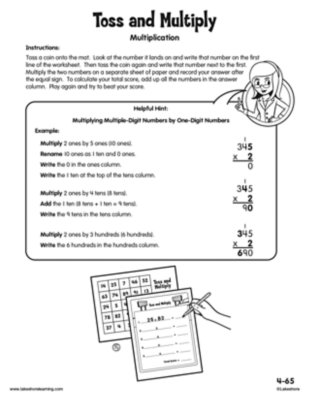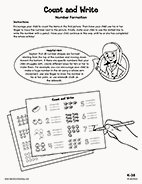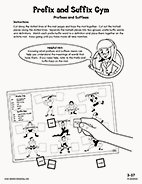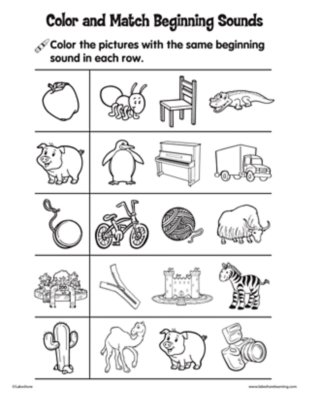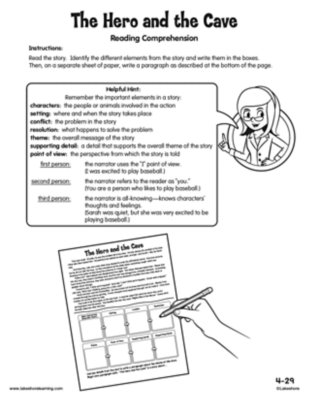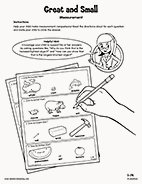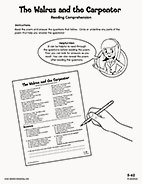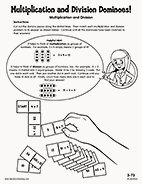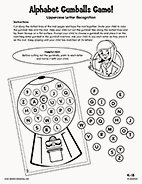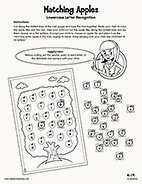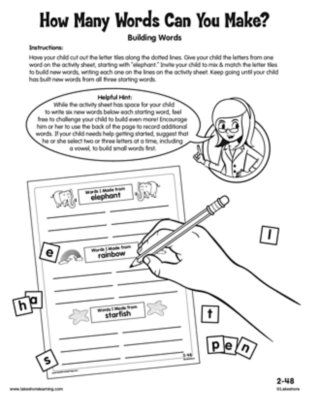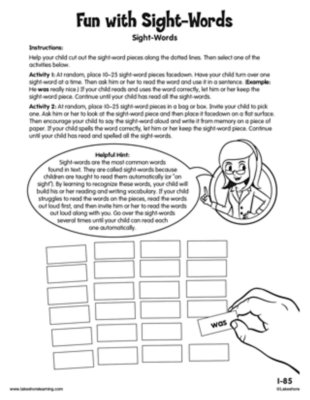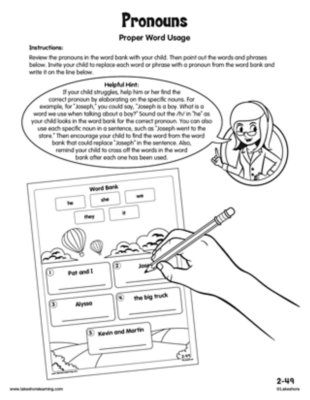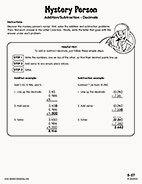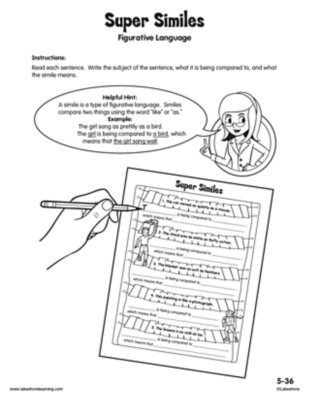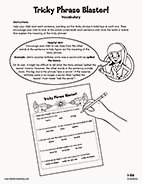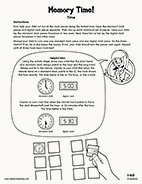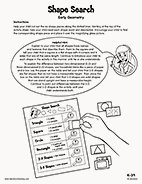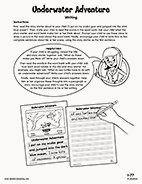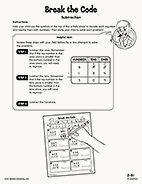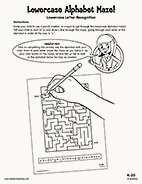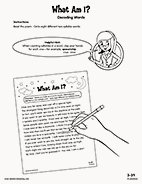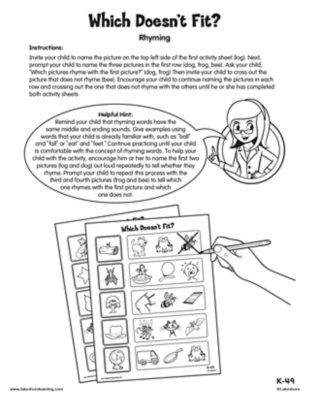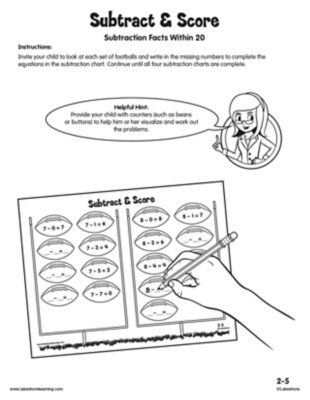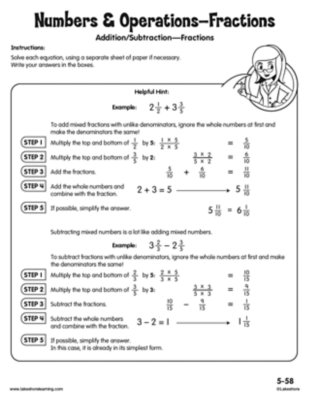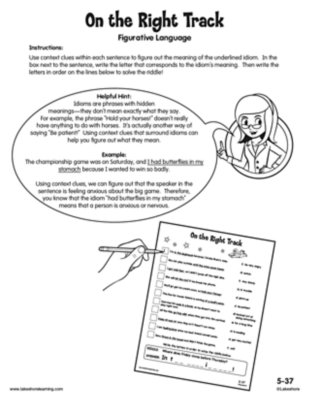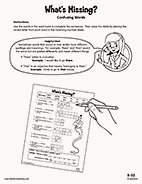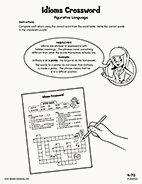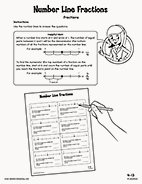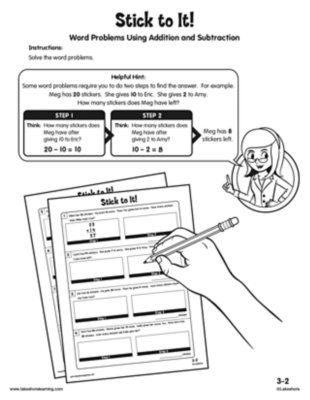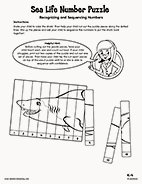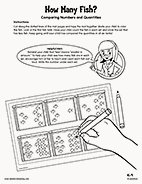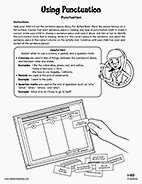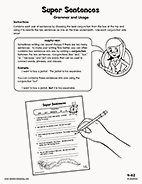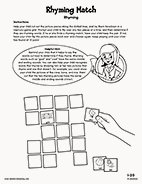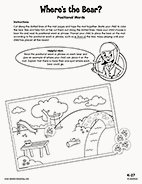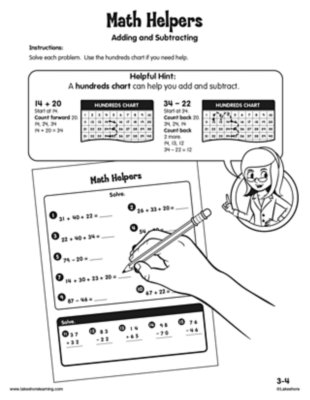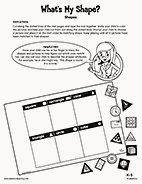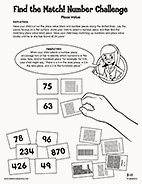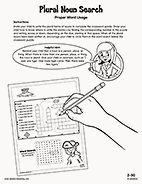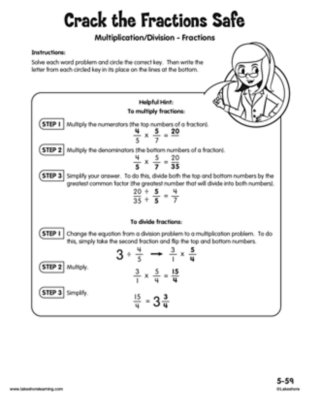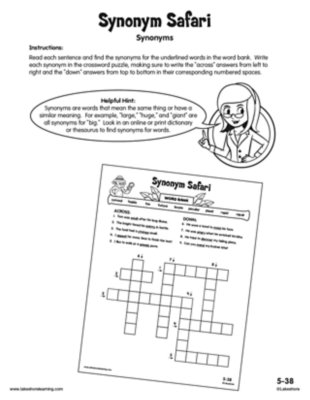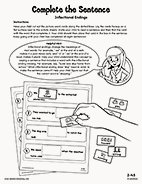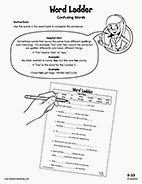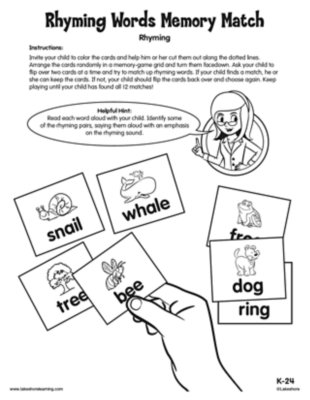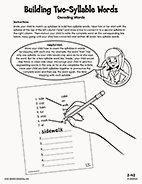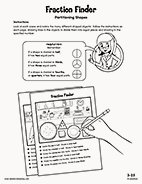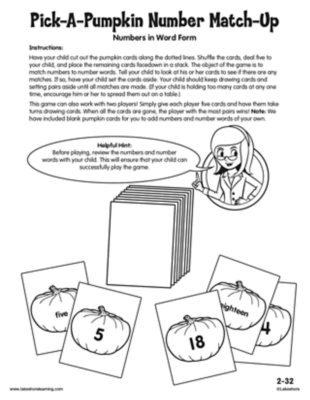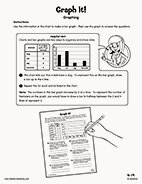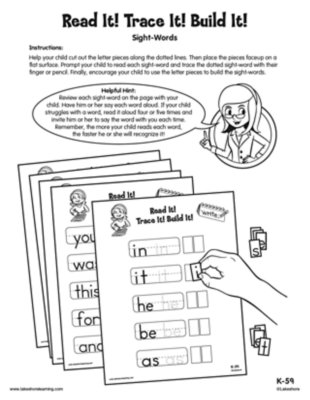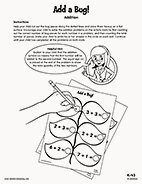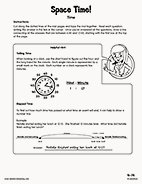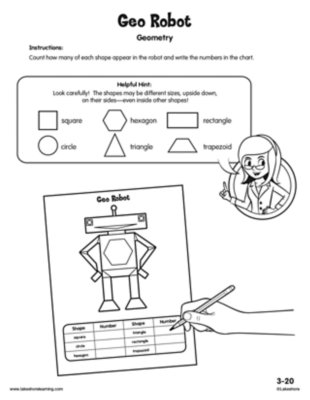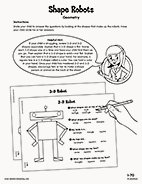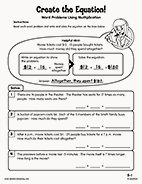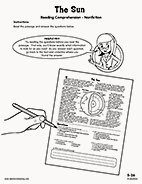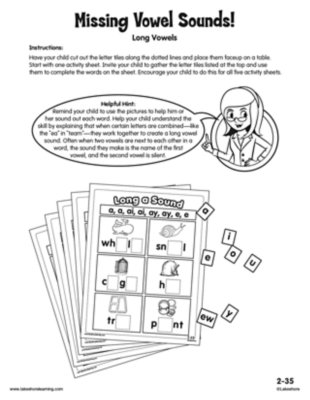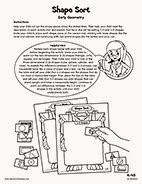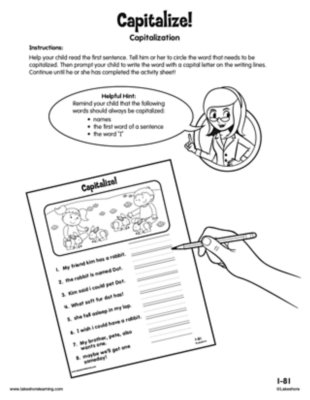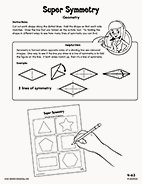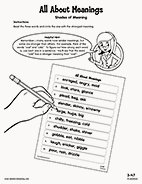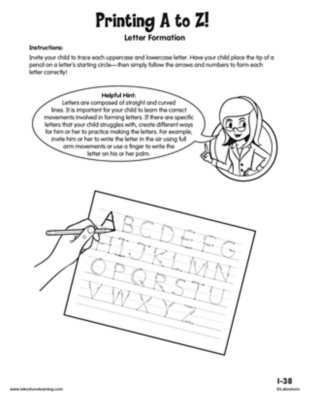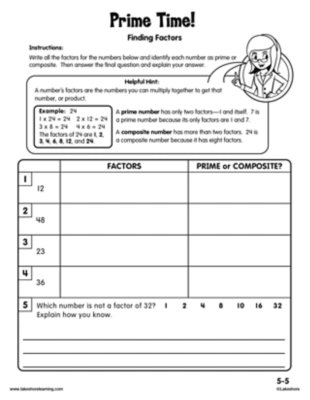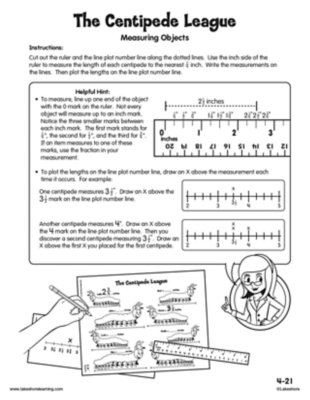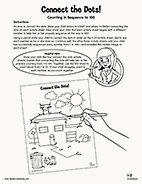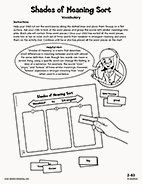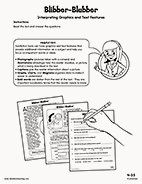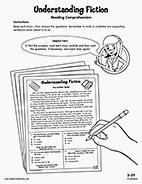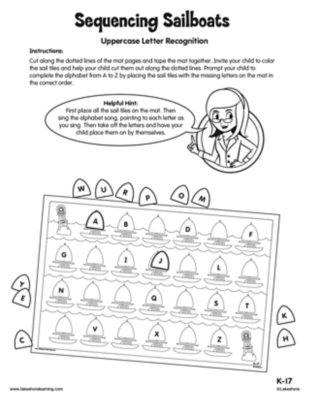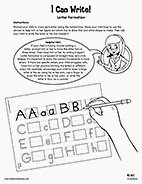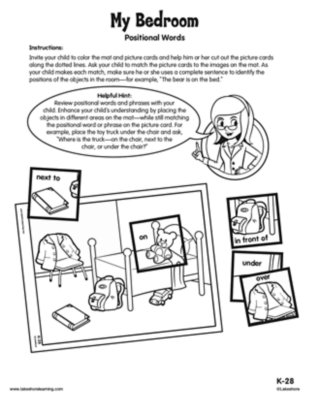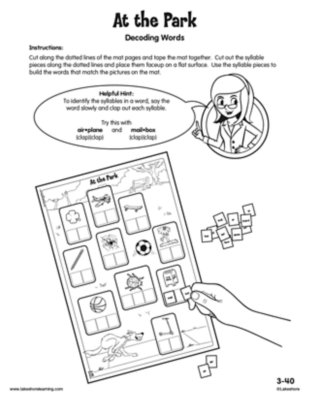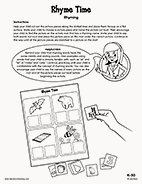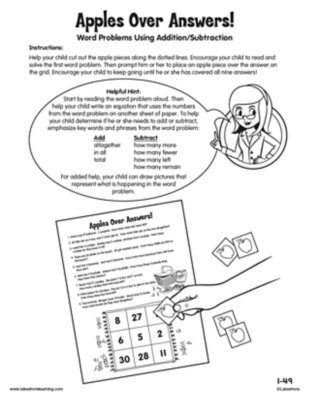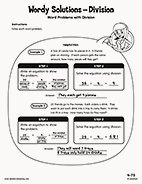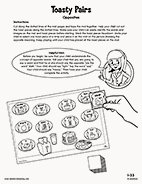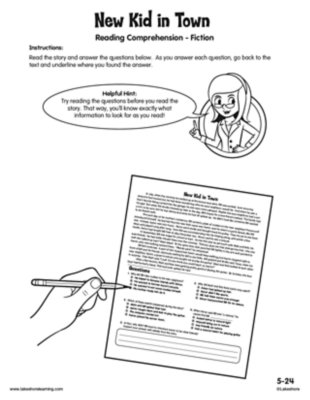Narrow by Grade
Grade
0 results for "sand" , here are results for "and"
When entering third grade, your child should be able to read and write numbers within 1,000 using numerals and number words.
View worksheetWhen entering third grade, your child should be able to measure, estimate and compare the lengths of objects in standard units, such as inches, feet, centimeters and meters.
View worksheetDuring first grade, your child will learn the attributes of many shapes—such as the fact that a triangle has three sides—and how to divide circles and rectangles into halves and fourths. Your child will also be asked to find shapes within shapes, such as turning a square into two triangles by drawing a line from one corner to the opposite corner.
View worksheetWhen entering second grade, your child should be able to determine if a two-digit number is greater than, less than or equal to another two-digit number and use the >, < and = symbols to show the answer.
View worksheetWhen entering third grade, your child should be able to solve word problems that involve money, including dollar bills, quarters, dimes, nickels and pennies.
View worksheetWhen entering kindergarten, your child should be able to count groups of up to 10 objects and determine if one group of objects is more than, less than or equal to the other.
View worksheetDuring second grade, your child will learn to mentally subtract multiples of 10 from three-digit numbers without having to write down the problems and work them out. For example, 800 — 10 = 790.
View worksheetWhen entering second grade, your child should be able to build and spell simple words by blending sounds together. For example, when given the letters “a,” “e,” “c,” “b,” “d,” “g” and “s,” your child should be able to use the letters to build and read at least three words.
View worksheetWhen entering third grade, your child should be able to recognize and draw shapes with specific attributes, such as six angles or three sides. Your child should also be able to identify triangles, quadrilaterals, pentagons, hexagons and cubes.
View worksheetDuring fourth grade, your child will multiply a number with up to four digits by a one-digit number and multiply two-digit numbers by two-digit numbers. Your child will also divide numbers with up to four digits by a one-digit number, including solving problems with remainders.
View worksheetDuring kindergarten, your child will learn to write numbers 0 through 20.
View worksheetWhen entering third grade, your child should be able to figure out the meaning of a new word when a prefix or suffix is added to a familiar word, such as figuring out the meaning of “unhappy” based on knowledge of the word “happy.”
View worksheetDuring fourth grade, your child will learn to write fractions with denominators of 10 or 100 as decimals, such as writing 3/10 as 0.3 and writing 34/100 as 0.34. Your child will also learn to add and subtract amounts of money using decimals.
View worksheetWhen entering fourth grade, your child should be able to read and analyze level-appropriate stories, dramas, poems and informational texts, identifying elements such as main ideas, key details and the author’s purpose.
View worksheetWhen entering first grade, your child should be able to describe objects by length or weight and compare objects by identifying which is longer, shorter, heavier or lighter.
View worksheetDuring fifth grade, your child will learn to read and analyze level-appropriate stories, dramas, poems and nonfiction texts—summarizing key events and details, analyzing characters and identifying elements such as the main idea and author’s purpose.
View worksheetDuring third grade, your child will learn to quickly and easily solve multiplication and division facts within 100 without having to count. For example, 9 x 9 = 81 and 56 ÷ 8 = 7.
View worksheetWhen entering kindergarten, your child should be able to recognize and name some uppercase letters, especially those in your child’s name.
View worksheetWhen entering kindergarten, your child should be able to recognize and name some lowercase letters, especially those in your child’s name.
View worksheetWhen entering second grade, your child should be able to build and spell simple words by blending sounds together. For example, when given the letters “a,” “e,” “c,” “b,” “d,” “g” and “s,” your child should be able to use the letters to build and read at least three words.
View worksheetDuring first grade, your child will learn to spell frequently occurring irregular words, such as “know” and “could,” and learn to recognize and read them on sight.
View worksheetWhen entering second grade, your child should be able to correctly use pronouns, singular and plural words, and past-, present- and future-tense words in sentences.
View worksheetDuring fifth grade, your child will learn to add and subtract decimals to the hundredths place. For example, 2.32 + 3.41 = 5.73.
View worksheetWhen entering fifth grade, your child should be able to figure out the meaning of figurative language, including similes, metaphors and idioms.
View worksheetDuring first grade, your child will learn to figure out the meanings of new words and multiple-meaning words based on the context in which they are used.
View worksheetDuring first grade, your child will learn to tell and write time in hours and half-hours using clock faces and digital clocks.
View worksheetDuring kindergarten, your child will learn to identify 2-D (flat) and 3-D (solid) shapes, find shapes in the real world and compare shapes based on their number of sides or corners.
View worksheetDuring first grade, your child will be asked to write opinion pieces, informative texts and narratives (stories).
View worksheetDuring second grade, your child will learn to add and subtract within 1,000, using regrouping when needed. For example, 937 — 469 = 468.
View worksheetWhen entering kindergarten, your child should be able to recognize and name some lowercase letters, especially those in your child’s name.
View worksheetWhen entering third grade, your child should be able to decode—or read and understand—two-syllable words by applying word analysis skills and by sounding out words.
View worksheetDuring kindergarten, your child will learn to recognize and create rhyming words.
View worksheetWhen entering second grade, your child should be able to subtract within 20 fluently. For example, 18 — 5 = 13 and 20 — 6 = 14.
View worksheetDuring fifth grade, your child will learn to add and subtract fractions with different denominators. For example, 1/3 + 1/4 = 4/12 + 3/12 = 7/12.
View worksheetWhen entering fifth grade, your child should be able to figure out the meaning of figurative language, including similes, metaphors and idioms.
View worksheetWhen entering fifth grade, your child should be able to correctly use frequently confused words, such as “to” and “two” or “there” and “their.”
View worksheetDuring fourth grade, your child will learn to understand the meaning of figurative language, including similes, metaphors and idioms.
View worksheetWhen entering fourth grade, your child should understand fractions as numbers and be able to represent fractions on a number line, compare fractions and identify equivalent fractions.
View worksheetWhen entering third grade, your child should be able to solve one-step and two-step word problems involving addition and subtraction within 100.
View worksheetWhen entering kindergarten, your child should be able to recognize numbers 1 to 20 and count them in sequence.
View worksheetWhen entering kindergarten, your child should be able to count groups of up to 10 objects and determine if one group of objects is more than, less than or equal to the other.
View worksheetDuring first grade, your child will learn to capitalize dates and people’s names. Your child will also learn how to use punctuation at the ends of sentences, as well as how to use commas in dates and to separate words in a series. For example, “I like apples, bananas, and strawberries.”
View worksheetDuring fourth grade, your child will learn many new rules of English grammar and usage, including rules about sentence fragments and run-on sentences, relative pronouns (which, that), relative adverbs (where, when, why), the correct order of adjectives and more.
View worksheetWhen entering first grade, your child should be able to recognize and create rhyming sounds.
View worksheetDuring third grade, your child will learn to capitalize the appropriate words in titles, such as the names of books and movies. Your child will also be expected to use commas in written addresses and with quotation marks to show when someone is speaking.
View worksheetWhen entering kindergarten, your child should be able to describe the positions of objects and shapes using positional words and phrases, such as “in front of,” “behind,” “over,” “under” and “next to.”
View worksheetWhen entering third grade, your child should be able to add and subtract two 3-digit numbers (327 + 216 or 452 — 318), add multiple 2-digit numbers (22 + 14 + 36 + 61) and find the missing number in equations (14 + __ = 19).
View worksheetWhen entering kindergarten, your child should be able to identify simple shapes—such as squares, circles, triangles and rectangles—and describe objects in the real world using shape names.
View worksheetWhen entering second grade, your child should be able to see groups of tens and ones when counting. Your child should also understand that the two digits in a two-digit number represent tens and ones. For example, there are 3 tens and 2 ones in the number 32.
View worksheetWhen entering second grade, your child should be able to correctly use pronouns, singular and plural words, and past-, present- and future-tense words in sentences.
View worksheetDuring fifth grade, your child will learn to multiply fractions by whole numbers and by other fractions (2/3 x 4 = 8/3 or 2/3 x 4/5 = 8/15). Your child will also learn to divide fractions by whole numbers and whole numbers by fractions (1/3 ÷ 4 = 1/12 or 4 ÷ 1/2 = 8).
View worksheetWhen entering fifth grade, your child should be able to understand words by relating them to their opposites (antonyms) and to words with similar but not identical meanings (synonyms).
View worksheetWhen entering second grade, your child should be able to read words with inflectional endings and use them correctly in sentences. Inflectional endings are letters that are added to words, such as “-ing,” “-es,” or “-ed.” For example, your child should be able to read the words “wishing,” “wishes” and “wished” and use them correctly in sentences.
View worksheetWhen entering fifth grade, your child should be able to correctly use frequently confused words, such as “to” and “two” or “there” and “their.”
View worksheetWhen entering kindergarten, your child should be able to recognize and match words that rhyme.
View worksheetWhen entering second grade, your child should be able to decode—or read and understand—regularly spelled one- and two-syllable words, such as “wet” or “seven.”
View worksheetWhen entering fifth grade, your child should be able to identify lines and angles, measure angles, understand symmetry and classify shapes based on their lines and angles. For example, your child should be able to classify right triangles by seeing that they have a 90-degree angle.
View worksheetWhen entering third grade, your child should be able to divide circles and rectangles into halves, thirds and fourths and describe the parts of each using terms like “halves,” “thirds,” “half of” and “a third of.”
View worksheetWhen entering second grade, your child should be able to read a number up to one hundred and write its corresponding numeral. For example, forty-one = 41.
View worksheetWhen entering fourth grade, your child should be able to use bar graphs to solve one-step and two-step problems.
View worksheetDuring kindergarten, your child will learn to read common, high-frequency words by sight, such as “the,” “of,” “to” and “you.”
View worksheetDuring kindergarten, your child will learn to add and subtract simple facts. For example, 3 + 7 = 10 and 10 — 5 = 5.
View worksheetWhen entering third grade, your child should be able to solve problems using information from line plots, picture graphs and bar graphs.
View worksheetWhen entering fourth grade, your child should know how to tell and write time to the nearest minute. Your child should also be able to solve problems in which time has elapsed. For example, “The movie started at 5:15 p.m. It was 1 hour and 20 minutes long. What time did the movie end?”
View worksheetWhen entering third grade, your child should be able to recognize and draw shapes with specific attributes, such as six angles or three sides. Your child should also be able to identify triangles, quadrilaterals, pentagons, hexagons and cubes.
View worksheetDuring first grade, your child will learn the attributes of many shapes—such as the fact that a triangle has three sides—and how to divide circles and rectangles into halves and fourths. Your child will also be asked to find shapes within shapes, such as turning a square into two triangles by drawing a line from one corner to the opposite corner.
View worksheetWhen entering fifth grade, your child should be able to multiply and divide to solve word problems and be able to solve multistep word problems that involve multiplication and division.
View worksheetWhen entering fifth grade, your child should be able to read, analyze and understand level-appropriate nonfiction reading passages, finding the main idea and important details, comprehending key words and phrases, comparing different accounts of the same event or topic and making inferences.
View worksheetWhen entering second grade, your child should understand that final -e and common vowel teams can be used to make long vowel sounds. For example, your child can recognize that the “oa” and “o_e” teams in the words “coat” and “rope” contain long “o” sounds. Your child should also be able to spell words using these vowel teams.
View worksheetDuring kindergarten, your child will learn to identify 2-D (flat) and 3-D (solid) shapes, find shapes in the real world and compare shapes based on their number of sides or corners.
View worksheetDuring first grade, your child will learn to capitalize dates and people’s names. Your child will also learn how to use punctuation at the ends of sentences, as well as how to use commas in dates and to separate words in a series. For example, “I like apples, bananas, and strawberries.”
View worksheetDuring fourth grade, your child will learn to identify lines and angles, understand symmetry and classify shapes based on their lines and angles. For example, your child will be able to classify right triangles by seeing that they have a 90-degree angle.
View worksheetWhen entering third grade, your child should be able to distinguish shades of meaning among closely related words—such as “toss,” “throw” and “hurl”—and identify which word has the strongest meaning.
View worksheetWhen entering first grade, your child should be able to print many uppercase and lowercase letters and write numbers 0 through 20.
View worksheetWhen entering fifth grade, your child should be able to identify whether a number is prime or composite and find all the factor pairs for a whole number between 1 and 100. Factors are the numbers that can be multiplied together to reach another number. For example, the factor pairs for 6 are 1 and 6 (because 1 x 6 = 6) and 2 and 3 (because 2 x 3 = 6).
View worksheetWhen entering fourth grade, your child should be able to measure the lengths of objects using rulers marked with halves and fourths of an inch.
View worksheetWhen entering first grade, your child should be able to count to 100 by ones (1, 2, 3, 4…) and tens (10, 20, 30, 40…).
View worksheetDuring second grade, your child will build vocabulary and learn to distinguish shades of meaning among closely related words, such as “toss,” “throw” and “hurl” or “thin,” “slender” and “skinny.”
View worksheetWhen entering third grade, your child should understand that the three digits in a three-digit number represent hundreds, tens and ones. Your child should also be able to write three-digit numbers in expanded form, such as writing 726 as 700 + 20 + 6. Your child should also be able to compare two 3-digit numbers using the greater than (>), less than (<) and equal to (=) symbols.
View worksheetWhen entering fourth grade, your child should be able to recognize common features of nonfiction text, such as diagrams, graphs and photo captions. Your child should also be able to use those features to locate information.
View worksheetDuring third grade, your child will learn to read and analyze level-appropriate stories, dramas, poems and informational texts, identifying elements such as key events and details, the main idea and the theme or moral.
View worksheetWhen entering kindergarten, your child should be able to recognize and name some uppercase letters, especially those in your child’s name.
View worksheetDuring kindergarten, your child will learn to print uppercase and lowercase letters.
View worksheetWhen entering kindergarten, your child should be able to describe the positions of objects and shapes using positional words and phrases, such as “in front of,” “behind,” “over,” “under” and “next to.”
View worksheetWhen entering third grade, your child should be able to decode—or read and understand—two-syllable words by applying word analysis skills and by sounding out words.
View worksheetDuring kindergarten, your child will learn to recognize and create rhyming words.
View worksheetDuring first grade, your child will be asked to solve word problems that involve adding and subtracting within 20.
View worksheetDuring fourth grade, your child will solve word problems that involve multiplication and division.
View worksheetWhen entering first grade, your child should be able to identify opposites for common adjectives and verbs, such as “happy/sad” and “stop/go.”
View worksheetWhen entering fourth grade, your child should be able to use clues within a sentence to figure out the meaning of an unfamiliar word or phrase. For example, in the following sentence, the underlined portion provides a clue to what the word “aviary” means: The zoo’s aviary was filled with owls, bluebirds, parrots, parakeets and cuckoos.
View worksheetWhen entering fifth grade, your child should be able to read, analyze and understand level-appropriate stories, dramas and poems—exploring key events and details, analyzing characters, examining point of view and making inferences.
View worksheet
